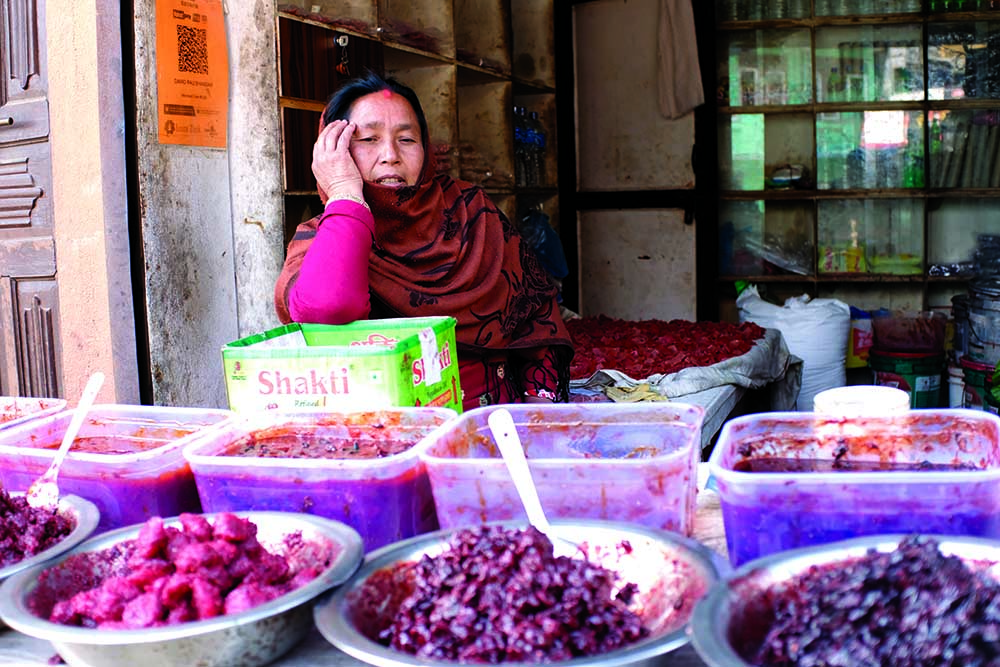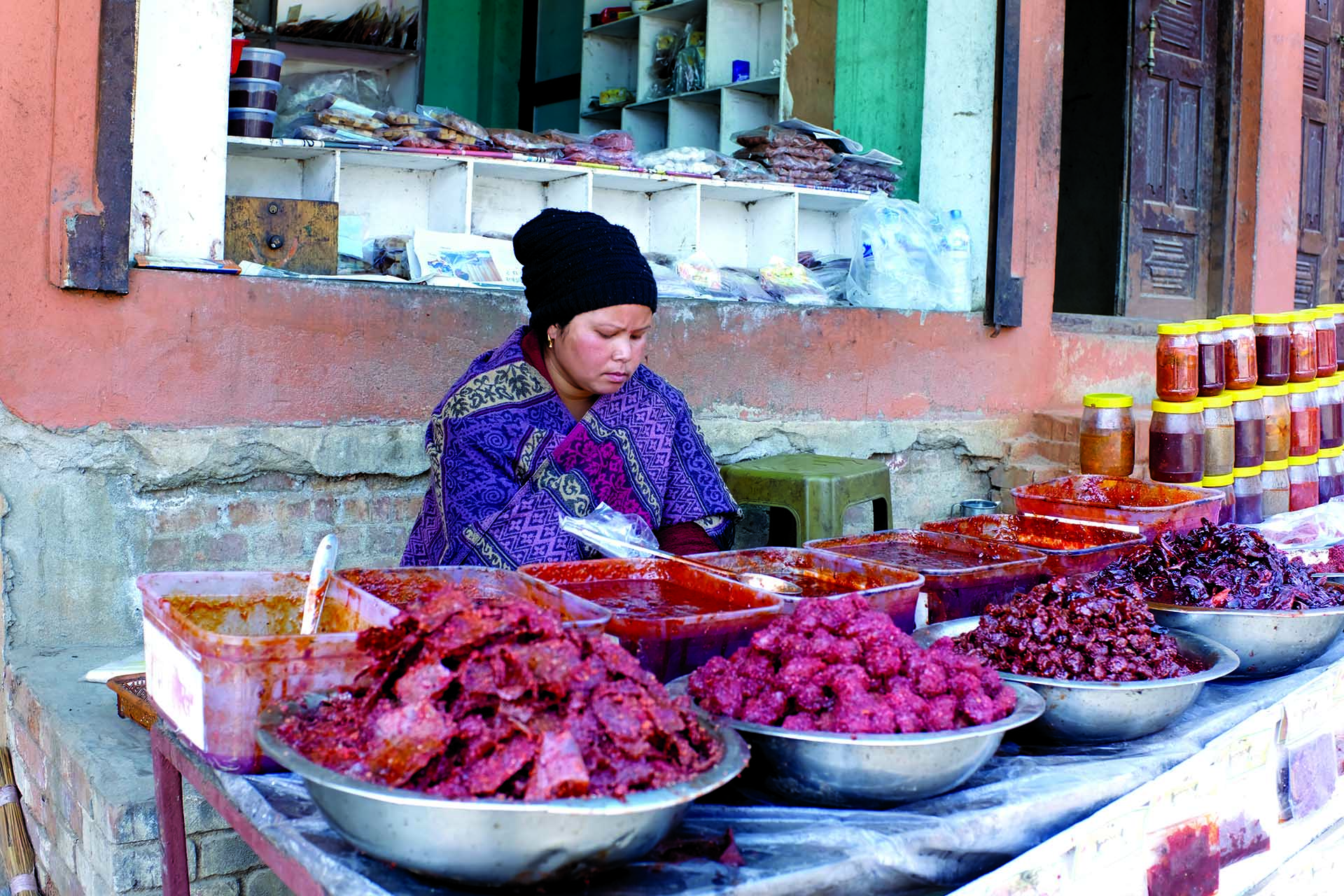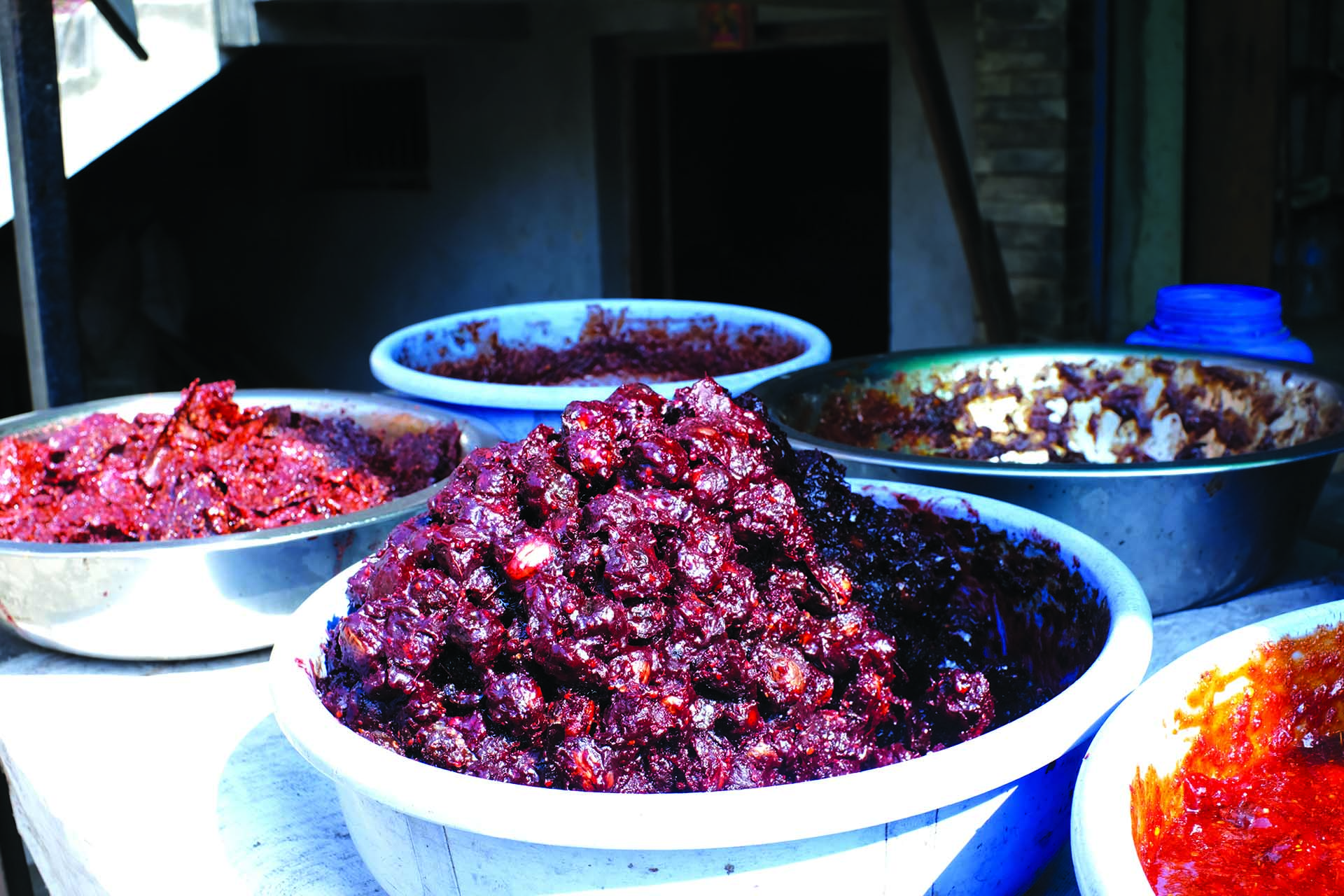The sports boy matures to ace reality television
“I find the word ‘old’ a cliché. There’s a stereotypical thinking of how someone my age should be. But that’s not who I am,” says Aman Pratap Adhikary, 46, a man of many talents, one of them his ability to start a good conversation at any given place and time. “I say this because when I posted my age on my birthday recently, some people said I was getting old. I’m friends with my young daughter and son, and I think I’m their age.” Adhikary, currently popular as the “Don Director” of the youth-favorite reality show “Roadies,” is a busy man in Nepali television. Starting his TV career as a sports program presenter/producer in the late 90s, Adhikary has experienced Nepali television like no other person: making sports programs, commentating, to directing music videos to making documentaries, he has done it all. And he has now found his calling in reality TV, a new challenge.
But how did he get into making something whose audience is mostly teens and young people in their mid- 20s? “Well, it’s because I think young and act young,” he says. “I even try out all the tasks for Roadies, as long as my crew permits me.” Adhikary says he maintains certain discipline in his life to keep him both physically and mentally strong. That he was an A-division footballer before joining television helps.
After having spent years in Nepali TV channels, Adhikary’s actual growth, as he puts it, started when he left for Scotland in mid-2000s. There, he got a degree in Television and Film Production from the Edinburgh University and also interned in international production houses. He believes his six years in Scotland shaped his career for the better.
But why did he come back to Nepal despite being eligible to apply for PR in the UK and having already gotten a decent job? “A mentor once asked me if I wanted to be a big fish in a small pond or a small fish in a big pond,” he says. “That struck me. I chose the former and here I am, using all my education and experience in Nepal.”
When Adhikary came back in 2010, he started “Venturing Nepal”, an adventure show that used multi-camera productions, then directed “Kripa Unplugged,” a music program that combined multi-camera production with studio-grade recording. “People were kind of surprised initially when I directed Kripa as they had seen me do just sports and adventures. Only a few knew I was the son of poet/lyricist Kshetra Pratap Adhikary and I grew up having musical legends like Narayan Gopal and Gopal Yonzon hanging out in my house.”
Adhikary was looking for the next big challenge when he was approached for Roadies. It was a big challenge for Adhikary as Roadies was a franchise that had been running in India since 2003, and the standards set by the production company were high. But with his experience, and support from the crew, the first season of Roadies was aired in 2017 and there has since been no looking back. “It was difficult initially when we had to start from scratch and gather a crew which could shoot Roadies,” he says. “We also had to get verifications and approvals for literally everything from India. But at one point, they let us work independently and even praised our work. That was a big achievement for us.”
With the popularity of Roadies at its peak, Adhikary also directed the very first season of “Ko Bancha Crorepati”, another franchise reality TV show. “That was textbook for me though,” he says. “While I was very passionate about Roadies, Crorepati was me using what I’d learnt in college.” He again credits his Roadies team for helping him out with Crorepati and says they are ready to take on any new challenge. That confidence has also promoted him to explore the launch of the Indian franchise “Splitsvilla” in Nepal. The project, an ambitious one, is still in its pre-production phase.
But Adhikary is more excited about his own reality production called “Shailee”, a poetry show where participants will have to woo the audience and the judges not only with their writing skills, but also their presentation. “This is our own offering, dedicated to my father,” he says. “We’re looking for the X-factor in Nepali poets and giving them an outlet for an outburst.” Shailee, Adhikary informs, is all set for production and will soon be launched
SANGA’S LIP-SMACKING CANDIES
I always carry a packet of titaura in my bag. Whenever my mood is off, I open the packet, take one out, and put it in my mouth,” says Rakina Maharjan, 15. “It makes me feel oh-so-good.”APEX had met Maharjan at Sanga, a scenic picnic spot on the outskirts of the valley, on a Saturday. Sanga is famous for a big standing statue of Lord Shiva—and for its many titaura factories and shops.
“I was around 9 or 10 when I first tasted titaura. From that day, I have loved its sour and sweet taste,” says another visitor Anish Sindukar, from Patan. “Now I am 23 and I am still hooked to it.”
A mouth-watering mix of tangy, sweet, sour, salty and hot, titaura or paun is made from lapsi (hog plum fruit). The process is simple: boil lapsi in salt water, take out the seed stones, and mix the gluey flesh with hing and other typical Nepali spices. Add some salt and sugar, and the ingredients of the typical Nepali delicacy is complete. Then you roll it, sun-dry it and cut it into slices. Alternately, you could make candies or a pickle-like mixture—and the titaura is ready to savor. Apart from the traditional lapsi, Nepali entrepreneurs have started making titaura with mango, lemon, and dates as well. Damo Paun Udyog of Sanga is one such venture. Firm owner Sanu Maya Shrestha has been in this business for over 25 years. Initially, she made and sold titaura to dif-ferent shops in the valley. She now has her own wholesale store. “I make a good living from it,” she says. A few steps from her factory is Kumari Paun Udyog, which has been producing lapsi “mada” for the past 30 years. “I consider myself a self-taught and successful entrepreneur,” says factory owner Mohan Kumar Shrestha. If not for his factory Shrestha reckons he would now be toiling somewhere in the Gulf



Tings to experience in Kathmandu and Lisbon
Several years ago, I was invited by a mutual friend to attend an art exhibition opening. The event, and I forget which artist it was, was staged in a hotel in a small alleyway off Lazimpat Road. My interest was further piqued as I used to live within 50 meters and knew the property. This is how I met Thomas and Annette Tingstrup, the owners of the lovely Tings Tea Lounge, also known as Tings Kathmandu. Over the next few years I became a regular at the many art exhibitions and social gatherings held in Tings. I also frequent it for the fabulous breakfasts with sourdough bread and cheese. Meantime, in 2016 Thomas and Annette moved to Lisbon to open Tings Lisbon but return frequently to Kathmandu. Earlier this year I visited them in Lisbon and finally had time to sit down and hear the story behind Tings. “Having had quite stressful and responsible careers, in 2000 we took a year out and travelled the world,” explains Thomas. “During this time we noticed a lot of out-of-school children and wondered how we as individuals could help.” And so the idea of opening small guest houses was born. The initial idea, I was told, was to open a guest house in five different countries, staffed and run by locals.
First up was Kathmandu. “We wanted to keep the guest house small so that it could be managed locally, to give back to the local community. So hiring local staff was a must. With our partner, Dorje Dolma in place in Kathmandu, we have achieved this,” explains Thomas. During their time in the corporate world, the Tingstrups stayed mainly in 5-star hotels but while travelling had been more at the budget end. What they wanted to achieve was the ambiance and friendliness of backpacker accommodation with more comfortable facilities such as on-suite bathrooms, heating and good food. An ‘oasis’ if you like for both social interaction and comfort. Exactly the type of place they would love to stay in while travelling. Job done!
I noticed when I was in Tings Lisbon that the staff were a mix of Nepali and other European nationalities. And the Lisbon-Nepal connection does not stop at the staff. While the Tingstrups’ love of art is obvious throughout both properties, in Lisbon there are two guest rooms dedicated to Nepali artists. The Kitten Room, with a beautiful, clean line mural by Shradha Shrestha, and the Chirag Room with paintings by Nepali artist Chirag Bangdel. Other Nepali artists, such as Aditya Aryal, are also featured in other rooms, along with artists from around the world.
An interesting twist at both locations is Tings Art and Tings Tings. Tings Tings is a collection put together by Annette which includes cashmere, organic soaps, paper lamps, and jewellery all made in Nepal, and bed linens made in Portugal. The soaps are hand-made, as are the rings. With stones sourced from Myanmar and the settings created in Nepal, each ring is a work of art in its own right. Tings Art speaks for itself… with the aforementioned artists gracing the wall of the guest rooms and public areas and colorful murals in the Lisbon garden.
In their Kathmandu property art exhibitions have never been of the boring kind. Take the wonderful bronze sculptures feature frogs in various day to day (human) activities by Mzn Shrawan. I actually own a pair who are playing chungi. And then there is the fantastic street art of Aditya Aryal. I think I am correct to say Thomas Tingstrup took up the promotion of Aryal’s work around the world to the extent that Aryal has exhibited in New York, Copenhagen, Hamburg, Lisbon, London and Nantes.
Like their guest houses, the Tringstrups take their art very seriously. More information can be found on their website, https://tingsart.com/. As for the guest houses, go visit, eat, sleep, explore—I know you want to
Singh’s dramatic entry into Rastriya Panchayat
The anti-Panchayat wave seen during the 1971 graduate elections was enough to unsettle the palace. King Mahendra feared dissenters entering the Rastriya Panchayat and making things difficult. Vote counting was then stopped, only to be resumed 35 days later after criticism from all quarters. Prime Minister Kirti Nidhi Bista gave a speech calling for a stop to the dissenters’ march into the parliament. He was not in a mood to allow vote counting and pressed Chief Election Commissioner Purna Prasad Brahman to act accordingly. But Brahman refused to comply as he favored free and fair elections.Brahman was then summoned to the palace. He somehow convinced the king that Ramraja Prasad Singh could not win. Vote counting started only after that. Erstwhile Secretary of Election Commission Laxman Rimal writes: “Ballot boxes were brought to the City Hall... Vote counting continued throughout the night. Somebody tried to cut off the power. I had arranged for lanterns anticipating disturbances... So the plot of rigging counts in darkness was foiled. The chief commissioner was able to conduct free and fair polls keeping undue influences at bay.”
Prayagraj Singh Suwal obtained most votes, followed by Ramraja Prasad Singh in the second, Krishna Prasad Bhandari in the third, and Prakash Chandra Lohani in the fourth positions. The results were declared from the City Hall itself. Lohani had then announced: “Unless polls are based on adult franchise, I will not accept a ministerial post.” It so happened that he became a minister only in 1983 when Rastriya Panchayat elections started to be held based on adult franchise. After vote counting, chief commissioner Brahman did not enter the office of Election Commission. He was under great pressure from the king and the prime minister. On 10 August 1971, the palace issued a notice that Brahman had resigned from his post immediately after the results were out. But instead of simple resignation it looked more like an angry ‘dismissal’ from the palace.
Among the graduate winners, only Suwal turned out to be a Panchayat supporter. He was considered an influential leader of Nepali Congress and had also served six years in prison. Maybe his prominent political personality was counted when he was appointed minister for health as well as infrastructure and transport through a cabinet reshuffle of 16 April 1972. Generally, in the Panchayat government, one was inducted as an assistant minister and gradually promoted to minister. But in Suwal’s case, a precedent was set when he was appointed a minister right at the beginning.
King orders arrest
Although the election results were out and Ramraja Prasad Singh was one of the winners, the Panchayat regime was plotting to prevent him from taking the oath of office. After all, he had gone underground after the polls. The administration was determined to track him down and arrest him.
On the day of the oath, youth leaders of Nepali Congress put him in a taxi and dramatically took him to Singhadurbar. Police had deployed additional patrol units to nab him. They were trying to prevent him from entering Singhadurbar at any cost. But he was already seated at the lobby of Rastriya Panchayat, and his presence came as a shock to then State Minister for Home Jog Mehar Shrestha. Inside the house, Panchayat supporters started clamoring to forestall dissenters’ oath. They blamed Singh of being a traitor. Yet Singh remained at his ease, unaffected by the uproar.
Chairman of Rastriya Panchayat Rajeshwor Devkota refused to confer on him the oath of office, stating that it raised a constitutional question. So the police entered the house and arrested Singh. House secretary informed that the arrest undertaken ‘on the orders of the king himself’. Curiously, seven Rastriya Panchayat members had stood in support of Singh O
Next week’s Vault of History will discuss 1985 bombings at Singhdurbar and Durbarmarg, and death sentence against Ramraja Prasad Singh



















